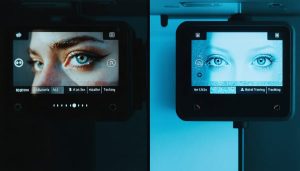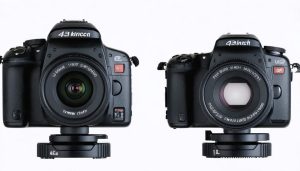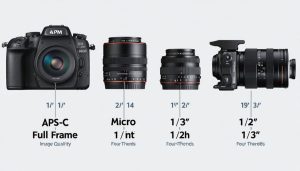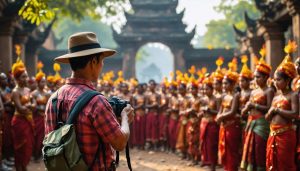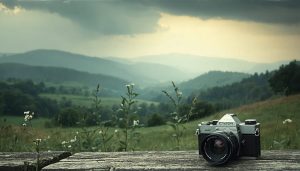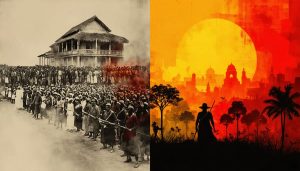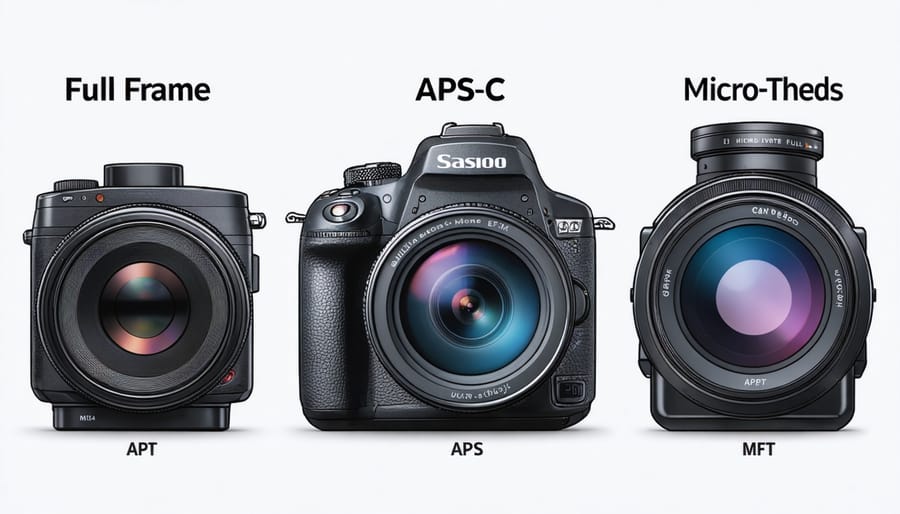
The heart of every modern camera lies in its digital camera sensors, sophisticated light-capturing devices that transform photons into the stunning images we see. These technological marvels come in various sizes and types, each offering distinct advantages for different photography needs. From the compact 1-inch sensors in premium point-and-shoot cameras to the expansive full-frame sensors in professional DSLRs and mirrorless bodies, sensor technology has revolutionized how we capture and create images. Understanding these differences isn’t just about technical specifications—it’s about knowing which sensor will help you achieve your creative vision, whether you’re shooting in bright daylight, dim interiors, or challenging high-contrast scenes. The choice between CCD, CMOS, and BSI-CMOS sensors can significantly impact everything from low-light performance and dynamic range to battery life and shooting speed, making this knowledge essential for both budding enthusiasts and seasoned professionals looking to make informed equipment decisions.
The Two Main Sensor Technologies
CMOS Sensors: The Modern Standard
CMOS (Complementary Metal-Oxide-Semiconductor) sensors have revolutionized digital photography, becoming the go-to choice for nearly all modern digital cameras. Unlike their CCD predecessors, these sensor technologies process data right on the chip, offering significant advantages in speed and power efficiency.
What makes CMOS sensors particularly appealing is their ability to read data from each pixel individually, resulting in faster continuous shooting speeds and better video performance. They’re also more cost-effective to manufacture, which has helped drive down camera prices while improving quality. Modern CMOS sensors can achieve exceptional low-light performance, with some models capable of shooting at ISO levels that would have been unthinkable just a decade ago.
The technology has matured significantly since its early days when CMOS sensors were criticized for noise and rolling shutter effects. Today’s versions feature on-chip noise reduction, improved dynamic range, and sophisticated readout mechanisms that minimize distortion. This evolution has made CMOS sensors ideal for everything from smartphone cameras to professional DSLRs and mirrorless systems.
The versatility of CMOS technology allows manufacturers to implement features like phase-detection autofocus points directly on the sensor, enabling faster and more accurate focusing, especially during video recording. This integration of multiple functions onto a single chip represents one of the key reasons why CMOS has become the industry standard.
CCD Sensors: The Historical Pioneer
CCD (Charge-Coupled Device) sensors were the cornerstone of digital photography’s revolution, first making their mark in the 1970s. These innovative sensors transformed light into electrical charges through a unique “bucket brigade” method, where photons were captured and transferred across the sensor one pixel at a time.
During the 1990s and early 2000s, CCDs dominated the digital camera market, beloved for their exceptional image quality and ability to capture clean, noise-free images. Their superior light sensitivity and uniform pixel response made them particularly valuable for scientific and astronomical photography, where precision was paramount.
While CMOS sensors have largely replaced CCDs in consumer cameras, CCD technology continues to excel in specialized applications. You’ll still find them in high-end scientific instruments, microscopes, and telescopes, where their precise light-gathering capabilities make them invaluable. Some medium format cameras also maintain CCD sensors for their unique color rendition and tonal qualities that many photographers still prefer.
The legacy of CCD sensors lives on in modern digital photography, having laid the groundwork for many imaging principles we take for granted today.
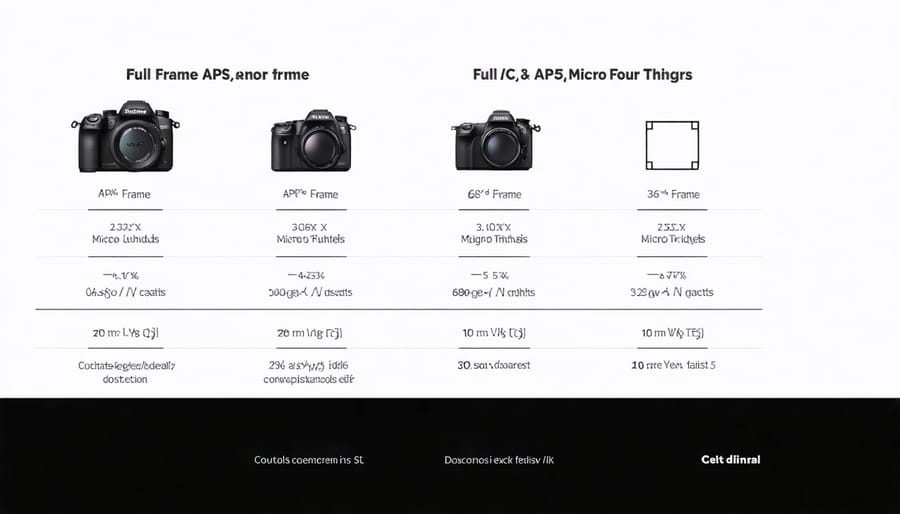
Sensor Sizes: Why They Matter
Full Frame: The Premium Choice
Full-frame sensors represent the gold standard in digital photography, offering the same dimensions as traditional 35mm film (36 x 24mm). This larger sensor size delivers several compelling advantages that make it the preferred choice for many professional photographers and serious enthusiasts.
The most notable benefit of full-frame sensors is their superior low-light performance. With larger individual photosites capturing more light, these sensors produce cleaner images with less noise at higher ISO settings. This makes them ideal for wedding photographers working in dimly lit venues or photojournalists who can’t always control their lighting conditions.
Full-frame sensors also excel at creating that coveted shallow depth of field effect, with beautifully smooth background blur (bokeh). Portrait photographers particularly appreciate this characteristic, as it helps separate subjects from their backgrounds with a more three-dimensional feel.
Another advantage is the wider field of view these sensors provide. When using the same focal length lens, a full-frame camera captures more of the scene compared to smaller sensor formats. This makes them particularly valuable for landscape and architectural photography, where capturing wide vistas is often crucial.
However, these benefits come at a price – both literally and figuratively. Full-frame cameras and their compatible lenses tend to be larger, heavier, and more expensive than their crop-sensor counterparts. But for photographers who demand the ultimate in image quality and creative control, the investment often proves worthwhile.
APS-C: The Sweet Spot
APS-C sensors represent an excellent middle ground between full-frame and smaller sensor formats, earning their reputation as the sweet spot for many photographers. With dimensions typically around 23.5 x 15.6mm (though slight variations exist between manufacturers), these sensors offer about 1.5x crop factor compared to full-frame cameras.
What makes APS-C particularly appealing is its balanced combination of image quality and practical benefits. The smaller sensor size allows for more compact and lighter camera bodies without significantly compromising image quality. This makes APS-C cameras ideal for travel photography, street shooting, and wildlife photography, where mobility matters.
These sensors excel in situations where you need extra reach. The 1.5x crop factor effectively increases your lens’s focal length, making telephoto photography more accessible and affordable. A 200mm lens on an APS-C camera, for instance, provides a field of view equivalent to a 300mm lens on full-frame, perfect for wildlife and sports photography.
Despite being smaller than full-frame, modern APS-C sensors deliver exceptional image quality, often matching or exceeding the performance of older full-frame sensors. They offer excellent low-light performance, dynamic range, and resolution that satisfy both enthusiast and professional needs. The sweet spot becomes even more apparent when considering the price-to-performance ratio, as APS-C cameras typically cost significantly less than their full-frame counterparts.
Micro Four Thirds: The Compact Contender
Micro Four Thirds (MFT) represents a sweet spot between compact cameras and larger-sensor systems, offering photographers a compelling balance of portability and image quality. The MFT sensor, measuring 17.3 x 13mm, is approximately half the size of a full-frame sensor but significantly larger than those found in point-and-shoot cameras.
What makes MFT particularly appealing is its excellent size-to-performance ratio. Despite its smaller dimensions, modern MFT sensors can produce impressive image quality with excellent detail and dynamic range. The system particularly shines in situations where mobility is crucial, such as travel photography or documentary work.
One of the format’s greatest strengths lies in its lens ecosystem. Because of the 2x crop factor, telephoto photography becomes more accessible – a 300mm lens effectively becomes a 600mm equivalent, making wildlife and sports photography more manageable without carrying massive lenses. This same characteristic makes MFT cameras popular among videographers, who benefit from the deeper depth of field when shooting interviews or documentary footage.
While MFT sensors may not match the low-light performance of larger sensors, manufacturers like Olympus and Panasonic have implemented sophisticated image stabilization systems and computational photography features to help overcome these limitations. For photographers who prioritize a lightweight kit without sacrificing too much image quality, the MFT system offers an excellent compromise.
Special Sensor Variations
Back-Illuminated Sensors
Back-illuminated (BSI) sensors represent one of the most significant advancements in digital camera sensor technology. Unlike traditional front-illuminated sensors, BSI sensors are designed with their circuitry on the back of the light-capturing layer, allowing more light to reach the photosensitive area.
Think of it like this: in a traditional sensor, light has to navigate through a layer of wiring before reaching the light-sensitive photodiodes – similar to sunlight trying to reach through a maze of tree branches. With BSI technology, these “branches” are moved to the back, creating a clear path for light to reach the sensor.
This innovative design offers several practical benefits. First, BSI sensors can capture up to 95% of incoming light (compared to about 60% in traditional sensors), resulting in better low-light performance and reduced noise in your images. This means cleaner night shots and better indoor photography without requiring extremely high ISO settings.
BSI sensors also enable faster readout speeds, which translates to improved autofocus performance and reduced rolling shutter effects when shooting fast-moving subjects. The technology has become increasingly common in modern cameras, from smartphones to professional mirrorless cameras, making it easier than ever to capture high-quality images in challenging lighting conditions.
While initially more expensive to manufacture, BSI sensors have become the standard in many camera models, offering photographers a significant advantage in image quality and versatility.
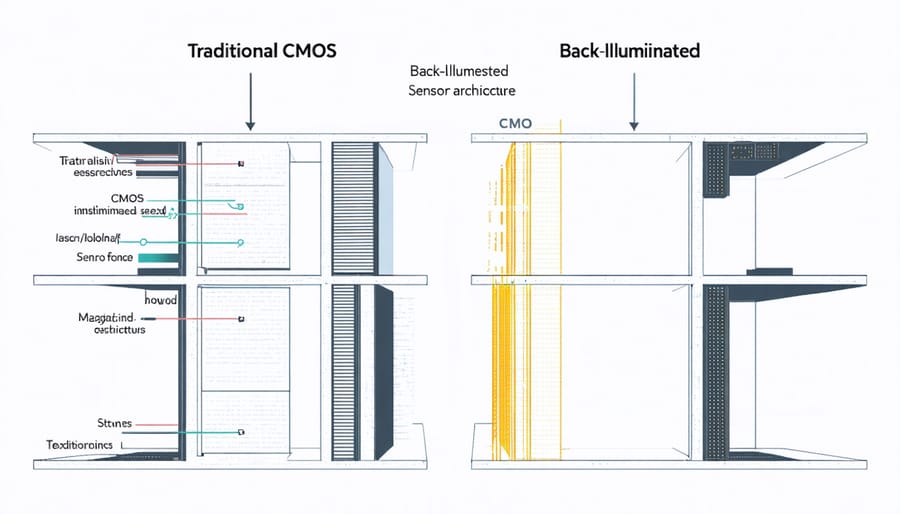
Stacked Sensors
Stacked sensor technology represents one of the most significant advances in modern digital camera design, offering remarkable improvements in speed and performance. Unlike traditional sensor designs, stacked sensors feature multiple layers of circuitry, with the photodiodes (light-capturing elements) on one layer and the processing circuits on separate layers beneath.
This innovative architecture delivers several key advantages. First, by separating the light-capturing and processing components, manufacturers can optimize each layer independently. The result is faster data readout speeds, which translate to improved autofocus performance and reduced rolling shutter effects when shooting fast-moving subjects.
Professional sports and wildlife photographers particularly benefit from stacked sensors. For instance, cameras with this technology can achieve continuous shooting speeds of up to 30 frames per second with full autofocus tracking – a game-changer when capturing decisive moments in sports or wildlife action.
Another significant advantage is improved low-light performance. The stacked design allows for more sophisticated noise reduction processing without compromising readout speeds. This means cleaner images at higher ISO settings and better dynamic range in challenging lighting conditions.
While stacked sensors typically command a premium price, their benefits are increasingly finding their way into mid-range cameras. For photographers who demand the ultimate in speed and performance, particularly in challenging shooting scenarios, the investment in a camera with stacked sensor technology can be well worth considering.
Real-World Performance Factors
Low Light Performance
Low light performance is one of the most crucial factors when comparing different sensor types, as it directly affects your ability to capture clear, noise-free images in challenging lighting conditions. Larger sensors generally perform better in low light situations because their bigger photosites (light-capturing elements) can collect more light.
Full-frame sensors typically offer the best low-light performance, with their larger surface area allowing for better light gathering capabilities and cleaner images at higher ISOs. This is particularly noticeable when shooting in dimly lit indoor spaces or during twilight hours, where you can often push the ISO to 6400 or even higher while maintaining acceptable image quality.
APS-C sensors, while smaller, have made significant strides in low-light performance thanks to advancing technology. Modern APS-C sensors can produce impressive results up to ISO 3200, though you might notice more noise compared to full-frame sensors at equivalent settings.
Micro Four Thirds and smaller sensors generally struggle more in low-light conditions, requiring lower ISO settings to maintain image quality. However, manufacturers have implemented various technologies, such as improved noise reduction algorithms and backside-illuminated (BSI) sensor designs, to help compensate for these limitations.
When shooting in low light, remember that sensor size isn’t the only factor – lens aperture, image stabilization, and shooting technique all play crucial roles in achieving optimal results.
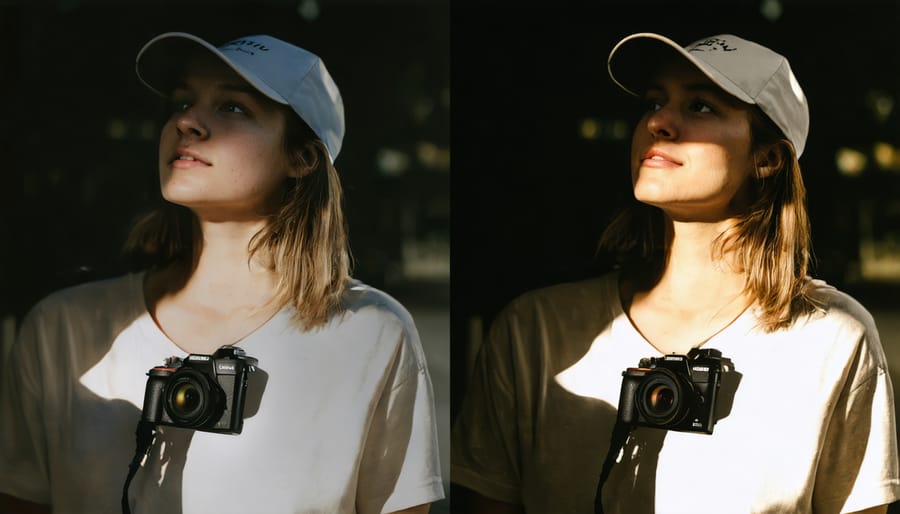
Dynamic Range
Dynamic range refers to a sensor’s ability to capture both bright highlights and dark shadows in a single exposure. Different sensor types offer varying levels of dynamic range capability, which directly impacts your ability to preserve detail across challenging lighting conditions.
Full-frame sensors typically lead the pack with the best dynamic range performance, often capable of capturing 14-15 stops of light. This exceptional range allows photographers to recover significant detail from both shadows and highlights during post-processing, making them ideal for high-contrast scenes like sunset landscapes or wedding photography.
Medium format sensors can match or slightly exceed full-frame performance in dynamic range, though the difference is often minimal in real-world shooting. APS-C sensors generally offer slightly less dynamic range than full-frame, typically managing 12-13 stops, though modern APS-C sensors continue to narrow this gap.
Micro Four Thirds and smaller sensors traditionally offer more limited dynamic range, usually between 10-12 stops. However, manufacturers have implemented sophisticated processing techniques to help compensate for this limitation. Features like HDR modes and highlight-shadow recovery can help maximize the available range.
It’s worth noting that sensor technology continues to evolve, and the latest generations of smaller sensors often outperform older, larger sensors in dynamic range capability. When choosing a camera, consider how you typically shoot and whether extensive dynamic range is crucial for your photography style.
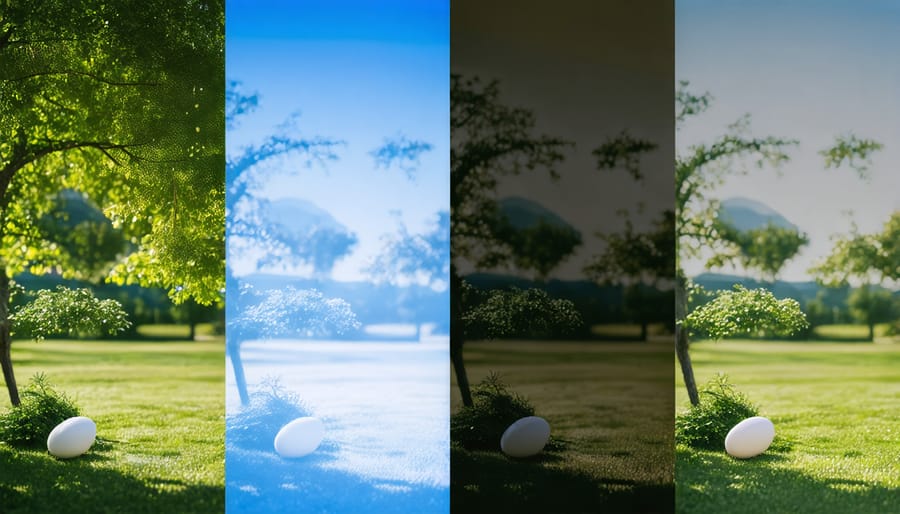
Choosing the right camera sensor ultimately depends on your specific photography needs and shooting style. Full-frame sensors excel in low-light conditions and provide superior image quality with beautiful depth of field control, making them ideal for professional photographers, especially those focusing on landscape, portrait, or wedding photography. However, they come with a higher price tag and larger physical footprint.
APS-C sensors offer an excellent middle ground, providing impressive image quality while maintaining affordability and portability. They’re particularly well-suited for sports and wildlife photography, where the crop factor can be advantageous for telephoto shots. Micro Four Thirds sensors, while smaller, shouldn’t be overlooked – their compact size and excellent video capabilities make them perfect for travel photography and vlogging.
For everyday photographers, modern APS-C cameras provide more than enough quality for most situations. If you’re just starting out or upgrading from a smartphone, an APS-C sensor camera offers the best value proposition. Professional photographers who demand the ultimate in image quality and low-light performance should consider full-frame options.
Remember that sensor technology continues to advance, and even smaller sensors today perform better than larger sensors from just a few years ago. Focus on finding the right balance between image quality, portability, and budget that matches your photographic journey. The best sensor is the one that helps you capture the images you envision while fitting your shooting style and practical needs.


